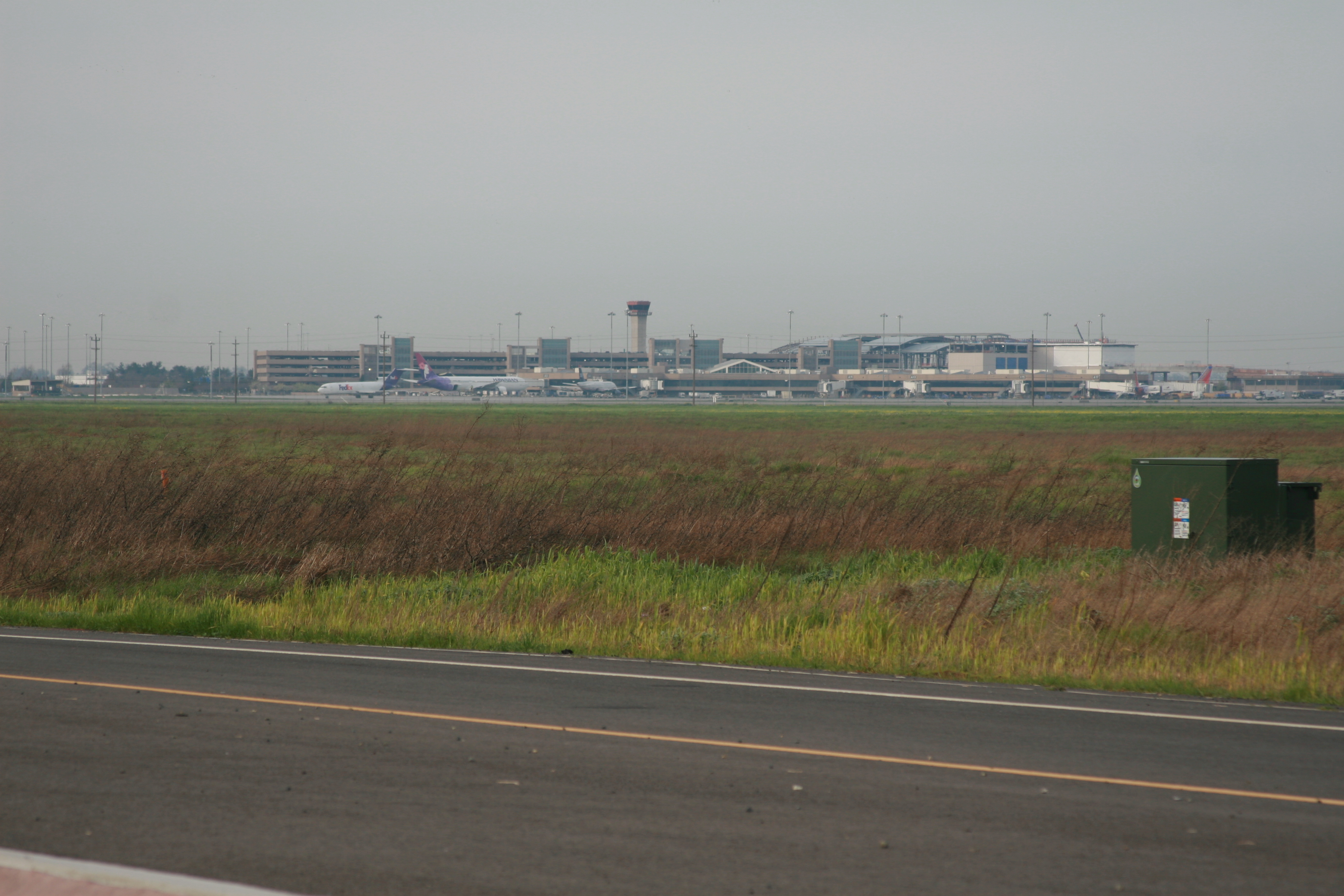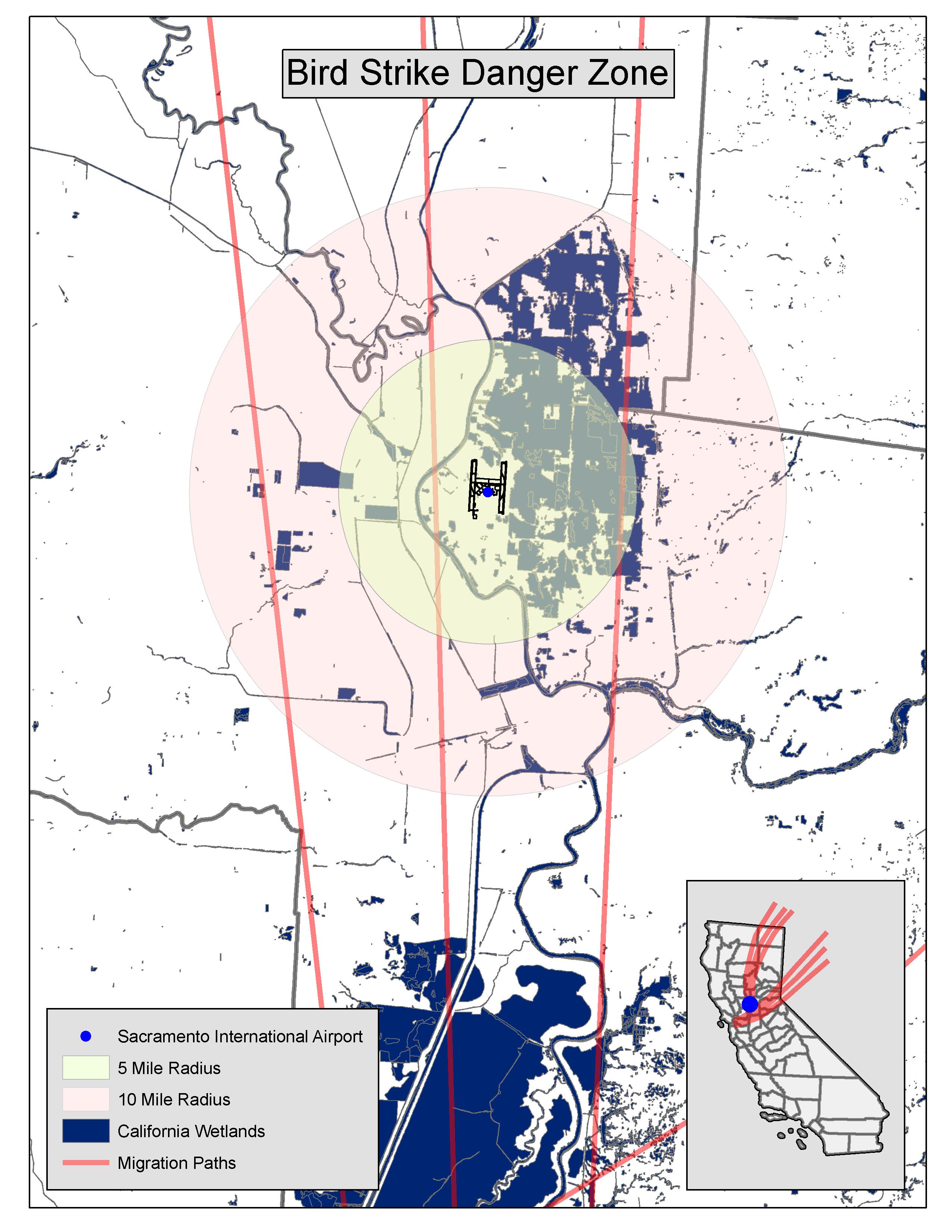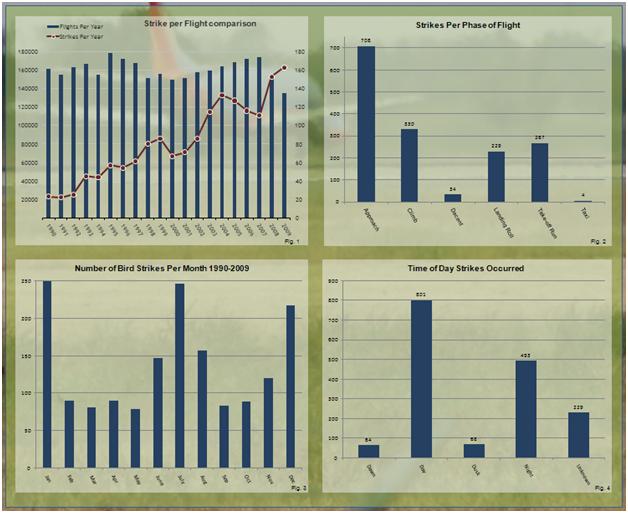| Title Federal Aviation Administration Documented Bird Strikes At Sacramento International Airport 1990-2009 | |
|
Author Daniel J. Funderburg American River College, Geography 350: Data Acquisition in GIS; Spring 2011 | |

| |
|
Abstract Travelling to and from Sacramento International Airport by airplane over the last twenty years has become more hazardous as the years passed. Collisions between aircraft and birds have caused millions of dollars of damage to various airline agencies. It is the purpose of this data analysis to display the most hazardous times of year, day and phase of flight for the flights arriving to and departing from Sacramento International Airport. | |
|
Introduction Aircraft and their passengers across the board are at serious risk due to the increasing number of aircraft bird strike incidents at the Sacramento International Airport (Dolbeer, 2003). The goal of my analysis of Federal Aviation Administration (FAA) data is to reveal that there is a definite upward trend in the number of incidents, as well as specific months, times of day, and periods of flight in which the hazards have increased over the past two decades. |

|
|
Background Sacramento International Airport (KSMF) is a dual runway airport that maintains a section of land a mile and a half wide and three miles long located in northern Sacramento County, north of Interstate 5. It is surrounded by thousands of acres of farmland, river wetlands, and habitat conservation lands that encourage and facilitate the presence of numerous varieties of animals including twenty-nine documented bird species.(Doolbeer, 2009) KSMF is bordered to the south by a major north-south freeway; to the west by farmlands and a golf course that separate it from the Sacramento River; to the north by land dedicated for future development that separates the property from the Natomas Basin Nature Conservancy and to the east by lands designated for future development that separate the property from neighborhoods and subdivisions of nearby Natomas, CA. The property itself is accessible on all four sides by motor vehicles by means of surface streets along a fence line protecting the airport grounds on three sides. |
Methods The majority of my data was obtained from two sources; the FAA Wildlife Strike Database and the Sacramento International Airport Wildlife Hazard Management Plan (WHMP). The FAA database was an interactive document that allowed me to conduct a query that separated the strike data for KSMF from the 160,000 recorded strikes that occurred from 1990-2009. These records were separated into over ninety separate categories pertaining to each documented strike. Once the KSMF records were separated, the data pertaining to time of day, month of year, phase of flight, and number of strikes per year were extracted and sorted chronologically to enable me to document trends in the data. The total number of flights at the airport were taken from the WHMP and cross referenced against the data from the FAA database to help to identify if the upward trends were due to an increase in the number of flights at the airport, or an increase in the number of species in the vicinity of the airport. |
|
Results Examination of the FAA data showed an increase in all of the fields that were extracted and studied. The data category that showed the most dramatic trend pertained to the number of reported incidents per year. As seen in Fig 1, when the documentation began in 1990, a total of twenty-three incidents were reported to the FAA. The number of reported incidents more than doubled five years later, only to double again by 2003. Over the nineteen years of recording strikes to the FAA, KSMF has seen an increase of over six hundred percent in the number of reported strikes. The phase of flight in which the incident occurred was separated into six separate categories by the FAA, these included the approach, climb, decent, landing roll, take-off run and taxi. As displayed in Fig. 2, the approach phase of flight saw a total of seven hundred and eight incidents recorded, more than doubling the three hundred and thirty recorded during the climb phase of flight. A total of five hundred incidents occurred on the ground at KSMF during the landing roll, take-off run and taxi phases of the flights. Further examination of the FAA data displayed times of year that were more hazardous to flights arriving to and departing from KSMF. Fig. 3 shows that over the nineteen year period, a total of two hundred and forty-nine strikes were reported in the month of January, two hundred and forty-six in the month of July and two hundred and seventeen in the month of December. Subsequently, the months of June, August, and November also showed significantly higher numbers of strikes compared to the remaining six months of the year. Fig. 4 displays data collected referencing the number of strike occurring during specific time periods of the day. During the nineteen year period of record collection, the highest number of incidents occurred during daylight hours, a totaling eight hundred collectively. A total of four hundred and ninety-three strikes occurred overnight, while dawn and dusk saw a combined total of one hundred and thirty-two incidents. A total of two hundred and twenty-nine incidents recorded during the nineteen year period were undocumented.
| |
 |
|
|
Conclusion Based on the data retrieved from the FAA bird-strike incident statistics, there has been an increase in the number of strikes annually recorded at KSMF. It is clear that highest numbers of these strikes are occurring during specific months of the year, at specific phases of flight and times of days. It is during these specific periods that airliners of all types and humans are at greater risk of damage as a result of collision with birds above and around Sacramento International Airport. |
Future Work Reporting enforcement that included more detail about the separate incidents, and requirement to report all incidents to the individual airlines by the FAA would help to increase the accuracy of the data published. This study would also benefit from a more in depth study of the migratory patterns of various species of birds that have been located in the area of KSMF. An analysis of these migratory patterns would help to further identify times of the year that are more hazardous to the passengers and crews of the various airlines that utilize KSMF.
|
|
References Begier, Micheal J., Dolbeer, Richard A., Wright, Sandra E., Weller, John. Wildlife strikes to civil aircraft in the United States 1990-2008. Federal Aviation Administration, Report of the Associate Administrator of Airports Office of Airport Safety and Standards Airport Safety & Certification, Washington, DC, September 2009. Dolbeer, Richard A. Eschenfelder, Paul. Amplified bird-strike risks related to population increases of large birds in North America. Warsaw, May 5-9, 2003. Wildlife Hazard Management Plan, Sacramento International Airport, March 7, 2007
| |